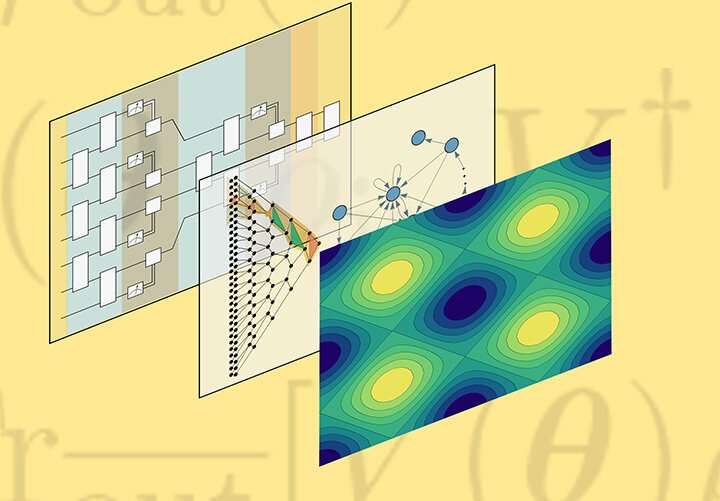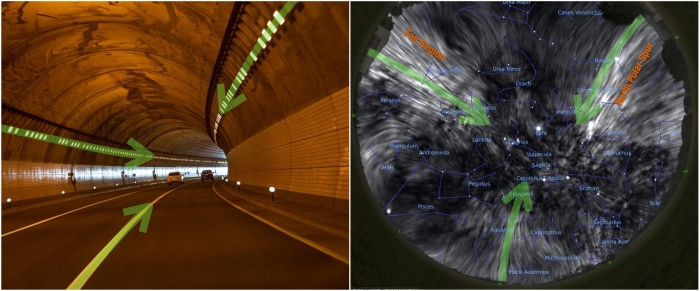Saturday, October 23
Foods of a Nutritionalist

Francesco Carta Fotografo | Getty
As a dietitian, I always tell people to think of the brain as the mastermind behind almost everything — our thoughts, memory, focus, movements, breathing, heartbeat — and that certain foods can help make it stronger, sharper and smarter.
Our brain and diet also play a key role in longevity. According to the National Institute on Aging, what we eat can directly impact inflammation and oxidative stress in our bodies — both of which can affect our risk of neurodegenerative diseases, including Alzheimer’s and Parkinson’s.
I spoke with Dr. Uma Naidoo, a nutritional psychiatrist, faculty member at Harvard Medical School and author of “This Is Your Brain on Food,” about what she eats to sharpen her memory, focus and overall brain health:
1. Extra dark chocolate

Chopped dark chocolate
Julia Malynovska | Twenty20
“Extra dark chocolate is full of antioxidants and cacao flavanols that help preserve the health of brain cells,” Naidoo tells CNBC Make It. “It also contains fiber to help reduce brain inflammation and prevent cognitive decline.”
A 2020 study looked at how dark chocolate and white chocolate can affect the memory of healthy young adults. Participants who were given dark chocolate had better verbal memory performances two hours after consuming the chocolate, compared to the group that received white chocolate. TO FIND OUT ABOUT HER OTHER FOODS, CLICK HERE...
Quantum Artificial Intelligence
 |
| A novel proof that certain quantum convolutional networks can be guaranteed to be trained clears the way for quantum artificial intelligence to aid in materials discovery and many other applications. Credit: Los Alamos National Laboratory |
Convolutional neural networks running on quantum computers have generated significant buzz for their potential to analyze quantum data better than classical computers can. While a fundamental solvability problem known as "barren plateaus" has limited the application of these neural networks for large data sets, new research overcomes that Achilles heel with a rigorous proof that guarantees scalability.
"The way you construct a quantum neural network can lead to a barren plateau—or not," said Marco Cerezo, co-author of the paper titled "Absence of Barren Plateaus in Quantum Convolutional Neural Networks," published today by a Los Alamos National Laboratory team in Physical Review X. Cerezo is a physicist specializing in quantum computing, quantum machine learning, and quantum information at Los Alamos. "We proved the absence of barren plateaus for a special type of quantum neural network. Our work provides trainability guarantees for this architecture, meaning that one can generically train its parameters."
As an artificial intelligence (AI) methodology, quantum convolutional neural networks are inspired by the visual cortex. As such, they involve a series of convolutional layers, or filters, interleaved with pooling layers that reduce the dimension of the data while keeping important features of a data set.
These neural networks can be used to solve a range of problems, from image recognition to materials discovery. Overcoming barren plateaus is key to extracting the full potential of quantum computers in AI applications and demonstrating their superiority over classical computers. TO READ MORE, CLICK HERE...
"The way you construct a quantum neural network can lead to a barren plateau—or not," said Marco Cerezo, co-author of the paper titled "Absence of Barren Plateaus in Quantum Convolutional Neural Networks," published today by a Los Alamos National Laboratory team in Physical Review X. Cerezo is a physicist specializing in quantum computing, quantum machine learning, and quantum information at Los Alamos. "We proved the absence of barren plateaus for a special type of quantum neural network. Our work provides trainability guarantees for this architecture, meaning that one can generically train its parameters."
As an artificial intelligence (AI) methodology, quantum convolutional neural networks are inspired by the visual cortex. As such, they involve a series of convolutional layers, or filters, interleaved with pooling layers that reduce the dimension of the data while keeping important features of a data set.
These neural networks can be used to solve a range of problems, from image recognition to materials discovery. Overcoming barren plateaus is key to extracting the full potential of quantum computers in AI applications and demonstrating their superiority over classical computers. TO READ MORE, CLICK HERE...
Wanting out Attention
The energetic phenomena known as Fast Radio Bursts (FRBs) are one of the greatest cosmic mysteries today. These mysterious flashes of light are visible in the radio wave part of the spectrum and usually last only a few milliseconds before fading away forever.
Since the first FRB was observed in 2007, astronomers have looked forward to the day when instruments of sufficient sensitivity would be able to detect them regularly.
That day has arrived with the completion of the 500-Meter FAST Radio Telescope (aka. Tianyan, “Eye of Heaven”). Since it commenced operations, this observatory has vastly expanded the number of detected FRBs.
That day has arrived with the completion of the 500-Meter FAST Radio Telescope (aka. Tianyan, “Eye of Heaven”). Since it commenced operations, this observatory has vastly expanded the number of detected FRBs.
In fact, according to research led by the National Astronomical Observatories of the Chinese Academy of Sciences (NAO/CAS), the observatory detected a total of 1,652 independent bursts from a single source in 47 days.
The research, which recently appeared in the journal Science, was conducted by researchers from the Commensal Radio Astronomy FAST Survey (CRAFTS) project.
The research, which recently appeared in the journal Science, was conducted by researchers from the Commensal Radio Astronomy FAST Survey (CRAFTS) project.
CRAFTS includes researchers from the Cornell Center for Astrophysics and Planetary Science, the Max-Planck-Institut für Radioastronomie, the Commonwealth Scientific and Industrial Research Organisation (CSIRO), and multiple universities in China, Australia, and the U.S. TO READ MORE, CLICK HERE...
Friday, October 22
Did Native Americans Originate from Japan?
The biological evidence "simply does not match up"
with archeological finds.
However, the authors of the new study say this scenario is highly unlikely because the biological evidence "simply does not match up" with the archaeological findings, according to a statement from the researchers.
Instead, the researchers suspect that Native Americans descended from a different group living somewhere in East Asia, although a lot of uncertainty remains about exactly where and when those ancestors lived.
"The artifact similarities between ancient Jomon and at least some of the earliest known Native American sites lie in the stemmed projectile points," co-author John Hoffecker, an archaeologist at the Institute of Arctic and Alpine Research at the University of Colorado Boulder, told Live Science. These similarities led previous researchers to suspect that the knowledge to make those tools had been passed down from one culture to the other, he added. READ MORE...
We Know Where to Look on Mars
"We're definitely in the right place."
There's an air of relief in the science team running the American space agency's (Nasa) Perseverance rover on Mars.
The researchers are sure now they've sent the robot to a location that provides the best possible opportunity to find signs of ancient life.
"Percy" touched down in Jezero Crater in February and ever since has been snapping thousands of images of its surroundings.
The interpretation of these pictures forms the basis of the first scholarly paper to make it into print, in this week's edition of Science Magazine.
The analysis confirms the rover is sitting on the floor of a once great lake that was fed by a meandering river entering the deep bowl from the west. We're talking of events over 3.5 billion years ago when the Red Planet's climate was far more benign.

From Perseverance's observations, it's now certain that where the river system met the lake water, the flows suddenly slowed and the sediment in suspension fell out to form a delta - the kind of wedge-shaped "landform" you'll see all over the Earth. READ MORE...
There's an air of relief in the science team running the American space agency's (Nasa) Perseverance rover on Mars.
The researchers are sure now they've sent the robot to a location that provides the best possible opportunity to find signs of ancient life.
"Percy" touched down in Jezero Crater in February and ever since has been snapping thousands of images of its surroundings.
The interpretation of these pictures forms the basis of the first scholarly paper to make it into print, in this week's edition of Science Magazine.
The analysis confirms the rover is sitting on the floor of a once great lake that was fed by a meandering river entering the deep bowl from the west. We're talking of events over 3.5 billion years ago when the Red Planet's climate was far more benign.

From Perseverance's observations, it's now certain that where the river system met the lake water, the flows suddenly slowed and the sediment in suspension fell out to form a delta - the kind of wedge-shaped "landform" you'll see all over the Earth. READ MORE...
Earth Surrounded by Giant Tunnel
Mysterious structures in the sky that have puzzled astronomers for decades might finally have an explanation – and it's quite something.
The North Polar Spur and the Fan Region, on opposite sides of the sky, may be connected by a vast system of magnetized filaments. These form a structure resembling a tunnel that circles the Solar System, and many nearby stars besides.
"If we were to look up in the sky," said astronomer Jennifer West of the University of Toronto in Canada, "we would see this tunnel-like structure in just about every direction we looked – that is, if we had eyes that could see radio light."
We've known about the two structures for quite some time – since the 1960s, in fact – but they have been difficult to understand. That's because it's really hard to work out exactly how far away they are; distances have ranged from hundreds to thousands of light-years away.
However, no analysis had ever linked the two structures together. West and her colleagues were able to show that the two regions, and prominent radio loops in the space between them, could be linked, solving many of the puzzling problems associated with both.
 Comparison with a real tunnel showing orientation. (Left: Pixabay/wal_172619/J. West; Right: Dominion Radio Astrophysical Observatory/Villa Elisa telescope/ESA/Planck Collaboration/Stellarium/J. West)
Comparison with a real tunnel showing orientation. (Left: Pixabay/wal_172619/J. West; Right: Dominion Radio Astrophysical Observatory/Villa Elisa telescope/ESA/Planck Collaboration/Stellarium/J. West)"A few years ago, one of our co-authors, Tom Landecker, told me about a paper from 1965, from the early days of radio astronomy. Based on the crude data available at this time, the authors (Mathewson & Milne), speculated that these polarized radio signals could arise from our view of the Local Arm of the galaxy, from inside it," West explained.
"That paper inspired me to develop this idea and tie my model to the vastly better data that our telescopes give us today." READ MORE...
Thursday, October 21
US Debt On Its Way UP...
The American debt is out of control, but America can afford it
because of the American dollar.
 Image: Adobe Stock
Image: Adobe StockThe US debt will reach $30T in the coming months. This is a certainty. While this seemed hardly imaginable only ten years ago when the US debt was still “only” $14.3T in 2011, it is now unavoidable as it reaches $28.8T at the time of writing.
In only ten years, the US debt has thus increased by +101%.
This would not be so serious if America’s GDP had grown at the same rate over this period. However, this is not the case, since the US GDP has stalled. Over the same period the US GDP grew by “only” +46.5%.
 America Gross Domestic Product — Source: The Fed
America Gross Domestic Product — Source: The FedUnder these conditions, it is not surprising that America’s debt-to-GDP ratio has risen well above 100% and currently stands at 127%. The time when having a debt-to-GDP ratio above 100% was taboo is over.
Among the world’s major economic powers, it has even become the norm.
The American debt is divided into two main categories
The US debt is managed by the US Treasury Department through the Bureau of Public Debt. The debt is divided into two broad categories: intra-governmental holdings and debt held by the public.
Intra-governmental debt is debt that the U.S. Treasury owes to other federal agencies. Some agencies, like the Social Security Trust Fund, collect more tax revenue than they need. Instead of putting this money under a giant mattress, these agencies invest in U.S. Treasury bonds.
Currently, this intra-governmental debt is about $6.4T. TO KNOW MORE ABOUT OUR DEBT... CLICK HERE...
Media Making Mistake
Jon Stewart says media making 'mistake' casting Trump as
'incredible supervillain'
'I think we make a mistake focusing this all on Donald Trump, as if he's ... some incredible supervillain that has changed the very nature and temperature of the US'
Comedian Jon Stewart said the media's hyperfocus on former President Trump is a mistake and that casting him as an "incredible supervillain" distracts from other threats.
The former "Daily Show" host told CNN's Jake Tapper in an interview airing Sunday that political pundits are "making a mistake" blaming Trump for the country's divisive discourse, arguing they should turn their focus to the threat posed by much larger institutions that have dangerously embraced "the idea that power is its own reward."
"I think we make a mistake focusing this all on Donald Trump, as if he's … Magneto and some incredible supervillain that has changed the very nature and temperature of the U.S.," Stewart said. "He's just been an effective vessel, but he's not singing new songs. … I think it's a mistake to focus it all on this one individual and not to focus it more on the idea that power is its own reward whether it be in the financial industry or government. Power doesn't cede itself, and unless we can figure out a better way to balance out that power … we'll be vulnerable." TO READ MORE ON STEWART"S THINKING, CLICK HERE...
Subscribe to:
Posts (Atom)




































